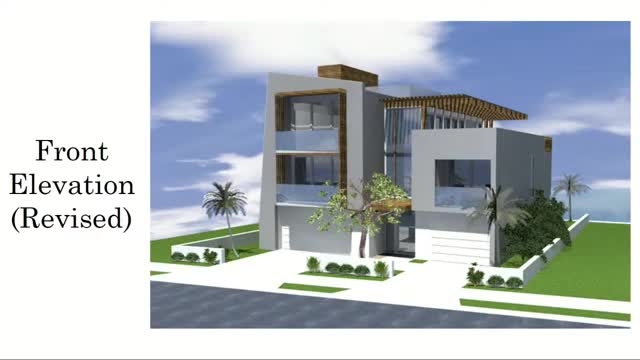Historic Neighborhood Faces Controversy Over Modern Home Design
August 01, 2024 | St. Pete Beach, Pinellas County, Florida

This article was created by AI summarizing key points discussed. AI makes mistakes, so for full details and context, please refer to the video of the full meeting. Please report any errors so we can fix them. Report an error »

In a recent government meeting, discussions centered around the construction of a modern house within a historic district, raising concerns about architectural compatibility and adherence to local regulations. A committee member expressed their appreciation for the design but highlighted the tension between modern aesthetics and the historic character of the neighborhood. They questioned whether the new structure aligns with the overlay's intent, which emphasizes compatibility with the historic nature of the area.
The committee member noted that while the house is visually appealing, it diverges from the established architectural style of the district. They pointed out that the overlay allows for certain design modifications, such as a ten-foot relief from the front setback, but argued that the spirit of the overlay is compromised by the modern design.
In response, the architect explained that the decision to utilize the overlay was driven by the limited size of the property, which is partially situated in a flood zone. They emphasized that the house is not excessively large compared to others in the area and that the design incorporates elements intended to resonate with the historic context, such as shell stucco on the ground level.
The architect also referenced other modern homes in the vicinity, suggesting that their existence indicates a precedent for contemporary designs within the historic district. They acknowledged the committee's concerns and expressed a willingness to adjust design elements, such as the garage doors, to better align with the neighborhood's aesthetic.
The meeting underscored the ongoing debate over balancing modern development with the preservation of historical integrity, a challenge that continues to shape the community's architectural landscape.
The committee member noted that while the house is visually appealing, it diverges from the established architectural style of the district. They pointed out that the overlay allows for certain design modifications, such as a ten-foot relief from the front setback, but argued that the spirit of the overlay is compromised by the modern design.
In response, the architect explained that the decision to utilize the overlay was driven by the limited size of the property, which is partially situated in a flood zone. They emphasized that the house is not excessively large compared to others in the area and that the design incorporates elements intended to resonate with the historic context, such as shell stucco on the ground level.
The architect also referenced other modern homes in the vicinity, suggesting that their existence indicates a precedent for contemporary designs within the historic district. They acknowledged the committee's concerns and expressed a willingness to adjust design elements, such as the garage doors, to better align with the neighborhood's aesthetic.
The meeting underscored the ongoing debate over balancing modern development with the preservation of historical integrity, a challenge that continues to shape the community's architectural landscape.
View full meeting
This article is based on a recent meeting—watch the full video and explore the complete transcript for deeper insights into the discussion.
View full meeting